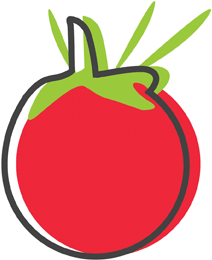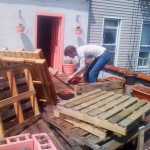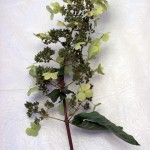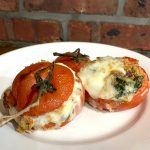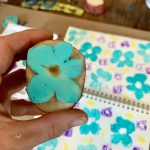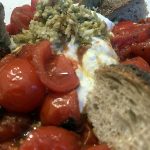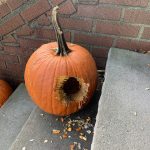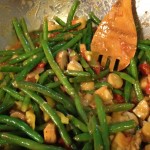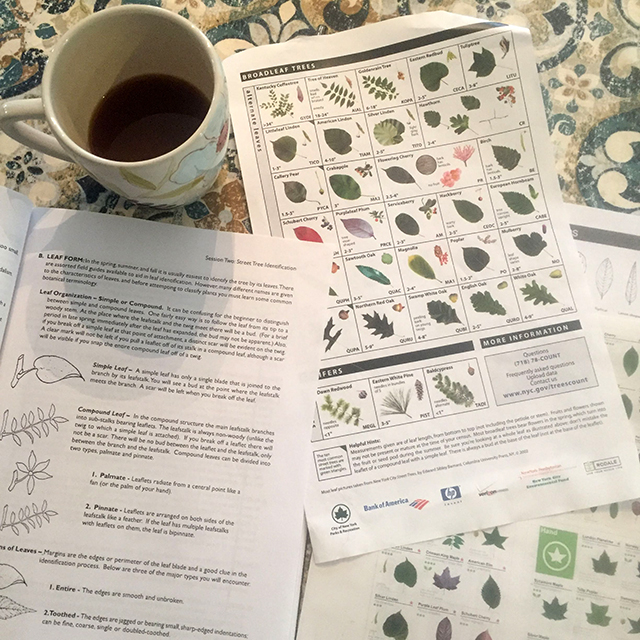
Ahhh! I’m so excited, I just started my citizen tree pruner course!! I learned of Trees New York (treesny.org) through twitter (social media can be a good thing guys!) Their mission, “..to plant, preserve and protect New York City’s urban forest through education and community participation.” And for decades now, they’ve been doing just that: “Trees New York was founded in 1976 as a volunteer response to New York City’s devastating cutbacks in forestry and tree-related community services. Trees New York has 40 years of experience in community tree planting, stewardship and education projects. Since its founding, Trees New York has trained over 12,500 Citizen Pruners and 8,000 youth in tree care and stewardship. Since 2005, Trees New York has planted over 5,000 trees in underserved communities throughout New York City.”
Last year I missed the deadline for the Trees New York citizen tree pruning class, but this year I made it a point to register early. The class is 5 weeks. You learn about tree biology, and urban tree care in the “field”. You can choose to attend the course in either Brooklyn, Queens or Manhattan. After completion, and the final exam, you are officially licensed to prune and cultivate any tree in NYC, outside of a conservatory.
In my first class, I learned why caring for the city’s trees are so important:
- Street trees act as a sound barrier, muting sound pollution.
- They reduce stormwater runoff, reducing pollution of our waterways and the ocean.
- Trees clean the air we breathe everyday by absorbing, dirt, grit and dust. Our instructor Ashleigh Pettus, Operations Manager & Environmental Educator mentioned an alarming statistic. According to National Asthma Survey, in 2009, 10% of all New York City children have been diagnosed with asthma and the cost burden to New York State healthcare system $1.8 billion annually. This is why Trees New York often host planting events around schools.
- Trees are home to our wildlife neighbors which are intracal to our urban ecosystem.
- Can you believe studies have show that trees around homes can increase property value by 20%
- Tree’s are pretty! They add beauty and character to our urban landscape, softening angular city streets.
In the second half of class I learned what can harm trees and what citizen pruners can do to make sure city trees thrive. Dog waste – very bad for trees! It’s toxic and absorbs into a trees vascular system. Heat off cars, trucks and pavement affect a trees survival. Compacted soil prevents water from penetrating tree roots. Girdling is when something like Christmas lights that are not removed strangle a tree – cutting into the outermost layer, the trees life line. Vandalism damages trees. If a branch is broke off or your proclaim your love “D <3 A” by scraping into a tree, you’re exposing the tree to infection, fungus and dangerous beetles. Think of it as an open wound and it takes years to heal.
While it is NYC Parks Departments responsibility to care for all of the city’s trees the reality is it’s too expensive for the NYC to maintain very tree planted. That’s why Trees New York created the tree pruner certification class in conjunction with NYC Parks.
There’s a good chance my columns in the upcoming weeks with be tree focused because there’s so much information I want to share with you!
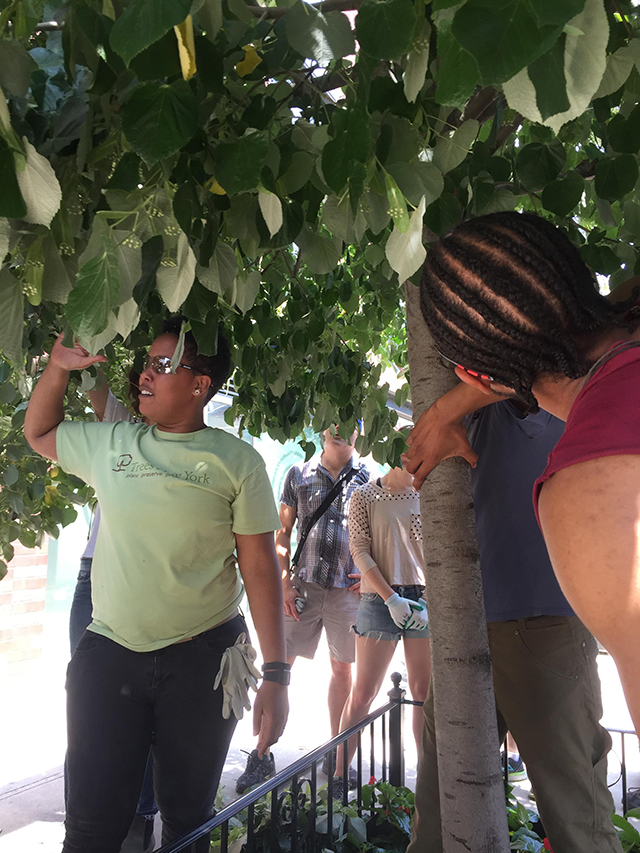
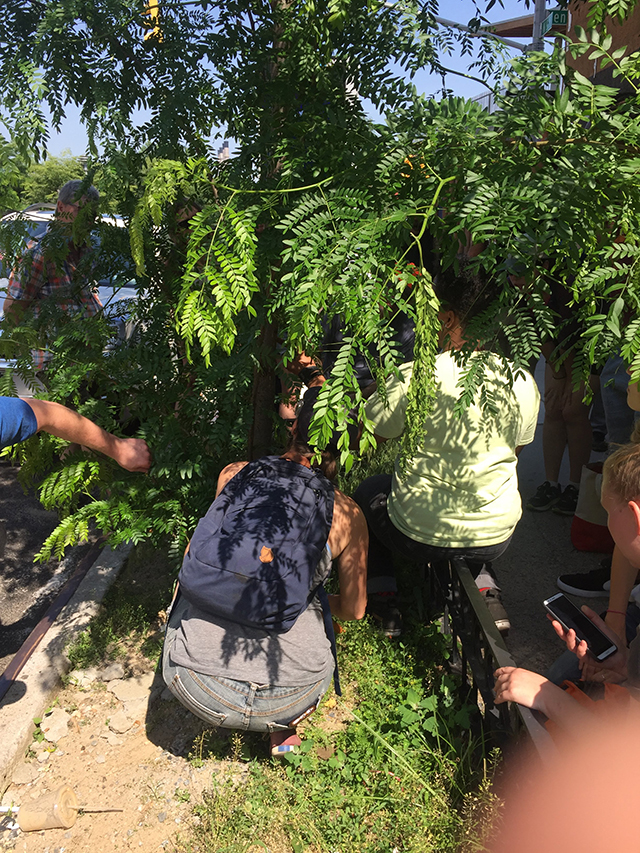
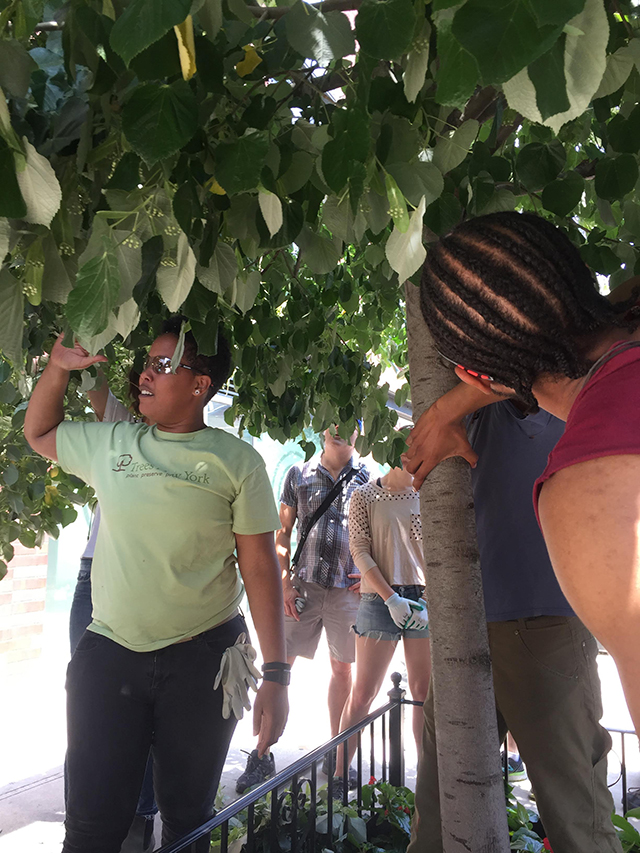
by Paula D.
on June 1, 2018 8:51 am in Food

I spent some time this past week tackling a big clean out of the basement, which, up until that point, was a very dusty 30x60ft storage space. How does one collect so much stuff? The plan is to transform the basement into guest quarters, for friends and family that visit this summer.
I was sifting through some boxes and came across one labeled books – containing mostly my art history books from college. Distracted and tired from organizing, I started flipping through. A work by Italian Baroque painter Annibale Carracci titled “The Beaneater” or Mangiafagioli in Italian, dated 1590, caught my attention.
The painting is a snapshot, just seconds before a man is about to eat his simple meal of beans and onions. Those foods and others that grow in or close to the ground were in Carracci’s time considered only suitable for low society – the peasants. It was thought that if a peasant ate foods grown high above the ground (intended for high society – the aristocrats) they would fall terrible ill.
The association continued. In the late 19th century, when poor Italian immigrants came to New York in hopes of living the American dream, beans were still known as “the poor man’s food” or “immigrant’s food” along with other cheap foods or foraged foods. Luckily, my people were gifted with the innate ability to cook anything superbly. So creating delicious meals using beans as the main ingredient was an easy feat.
After my tiresome day of peasant work in the basement I thought it only appropriate to pay homage to “The Beaneater”* – so for dinner I made a simple meal from beans. I found this italian style tangy bean dip recipe from CountryLiving.com and used it as a starting point putting my own spin on it.
The original recipe suggests serving on pita triangles – that would be tasty I imagine but I decided to fill tomatoes with the mixture. Less carbs and it looks pretty adorable. Enjoy!
The Beaneaters Dip
INGREDIENTS:
2 cups cannellini beans
3 large cloves garlic
1/4 cup fresh lemon juice
1/4 cup extra-virgin olive oil
1 oz. fresh chopped basil
1/4 cup or more of Romano cheese
Medium to small tomatoes and/or pita bread
Salt to taste
DIRECTIONS:
Puree all ingredients together in a food processor.
Let the mixture stand for at least 1 hour. It with thicken.
Serve stuffed inside tomatoes or with pita triangles.
Serving in tomatoes: Cut the top 1/4 portion of the tomato off. Gently scoop the inside of the tomato with a knife and spoon. Don’t clean it out completely. Fill the tomato with the bean mixture. Eat.
*Annoyingly off-topic, my husband had to point out that there was a 19th century baseball team called the Boston Beaneaters, who eventually became the Atlanta Braves. They’re the oldest continuously-playing team in North American sports.
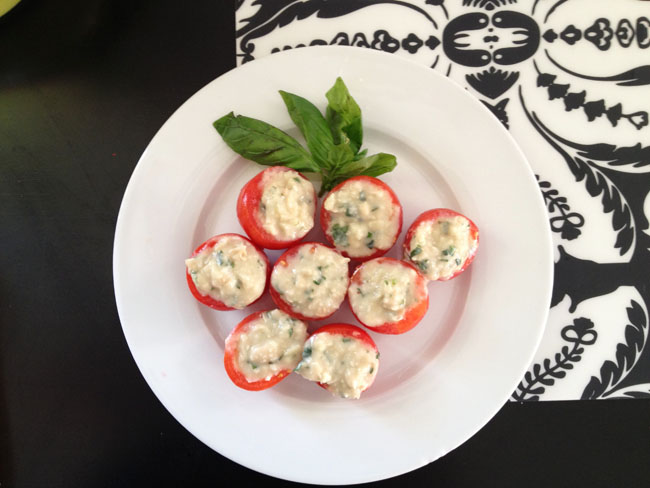
by Paula D.
on May 22, 2018 4:05 pm in Queens
I get bus anxiety. I suppose it stems from my limited riding experience. To put it in perspective, I got my driver’s permit at 16 years old and was cruising myself and my friends all over Long Island by the age of 17. My father would gas up “my” car every few days for those 11 years (not joking) until I moved out of the house at age 26. I never pumped gas before that. And even then, living in Ridgewood, Queens, I had wheels. My father upgraded his Hyundai and gave me his “old” Hyundai Elantra so I could get around (but really to visit him and my mother).
I rode the bus on few occasions in the Ridgewood days. Sometimes I would weigh the fear-factor – riding the bus vs. parallel parking in downtown Brooklyn. The bus won sometimes. In other instances – say when I was planning on having cocktails– I’d chance the bus instead of an extra hour on the subway.
As a Rockawegian, I’ve been riding the bus more frequently – about three times a month. Matt takes the car to work, so I don’t have a choice sometimes.
I have several bus anxiety triggers. Getting on the bus and not having enough money on my metrocard is a primary concern. To deal with this issue, I’m forced to bring $5.50 in change pre-counted and separated into two pockets – for safe measure. The new select bus service machine is very scary to me. My first encounter with THE MACHINE went horribly wrong. I thought it dispensed Metrocards. A nice gentleman waiting at the stop explained and helped me get my ticket. In the nick of time, I hopped on the Q22. Bus in motion, I presented my ticket to the driver and he gave me the “raised eyebrow”. “That’s for the express.” I was baffled. The bus driver sensed my confusion, realized I was bus ignorant and didn’t kick me off, thank the good Lord.
High level fears include missing the stop. If I’m taking the bus off the peninsula, I track my location on my phone so I know exactly where to get off. I thought this was pretty witty but 6 months ago, I was on the bus and it blew right by my stop. I ended up in a part of Brooklyn that could’ve been a Class M planet the Enterprise was about probe. I called Matt right away, panicky and he said “Did you forget to request a stop?” “No, the stop was on the route” I told him. I learned then that if passengers aren’t waiting to board at a designated bus stop, the bus doesn’t stop. In the past, I guess I just go lucky. Then there’s the back door. I hate it. It’s really hard to open. I fear the bus driver won’t see me pushing it to get off. He’ll start driving away and I will fly out into traffic and die.
Lesser fears, annoyances and social editique… It’s hard to walk on a moving bus. It takes me a while to get all my quarters in the machine, so the bus starts moving while I’m still standing. 3pm is the most annoying time to take the bus, I learned. The school kids get out and the bus is chaotic. It’s so crowded I’m afraid I won’t get out of my seat in time to exit at my stop. Lastly (I should know better) I learned it’s weird to check your lipstick on the bus and then take a selfie. But I had to for the sake of this column.
Readers, you may be thinking just Uber or take a Lyft. Well, my mother tells me I could get abducted and killed and left for dead somewhere (probably in the Class M section of Brooklyn) if I “take one of those”, so I don’t Uber alone. I know it’s a bit irrational but every time I go to pull up the app, I see an SUV episode flash through my mind followed by my mother’s voice “DON’T TAKE THE CHANCE PAULA… DUN DUN!”.
Lucky for me it’s biking weather now. For the summer anyway, I should be able to avoid the bus and all the unpleasantries it brings.
Previously published in The Wave.
We’ve had a handful of exotic visitors this year in Rockaway. Over the winter, the Snowy Owl spent a couple of months relaxing in Breezy Point. Several seals hit the beach recently, beating the summer crowds no doubt. In April, two dolphins joined a group of surfers at the line-up for a swim. Rockaway attracts the extraordinary and seemingly is a landing pad for the kooky and creative – humans and animals alike. So when my friend Matt Johnson posted a picture of a peacock at Rockaway Roasters, I thought “There’s a peacock down for the day (DFD). The summer season is upon us.”
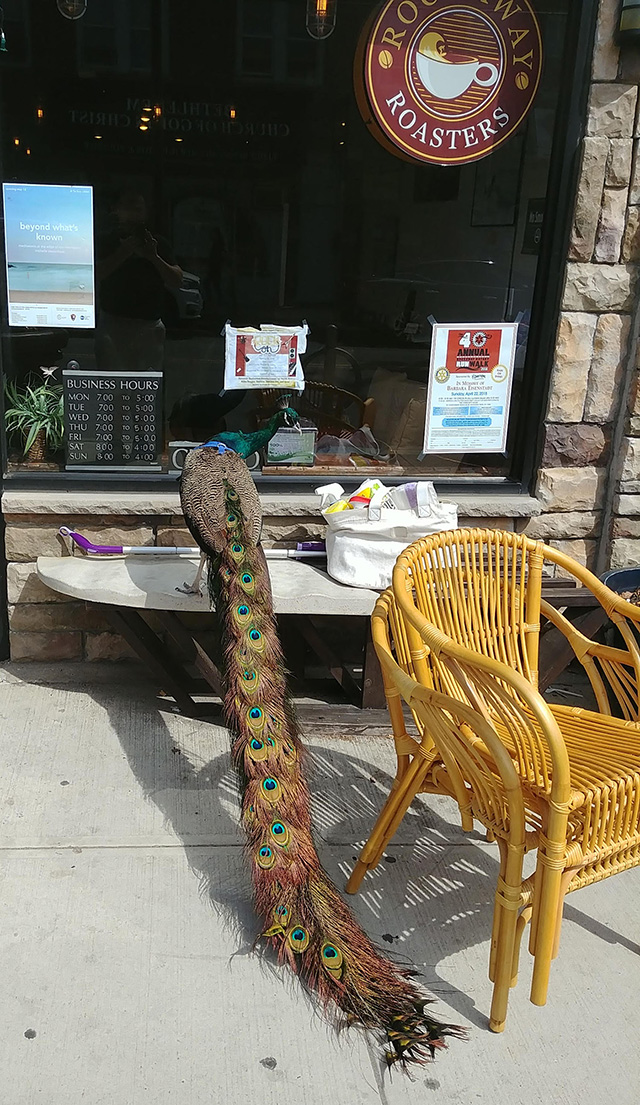
@dexerthepeacok visits the beach and Rockaway goes-wild.” Matt’s instagram photo is humorously captioned.
I asked Matt about his reaction when he spotted the colorful, 5 ft long fowl. Birds of a feather, his reaction was similar to mine. “I was having a lazy morning after a late night out, watching the parade of people and pets through the coffee shop window. At one point I looked up from my phone and saw a peacock staring back at me from the other side of the glass. Weirdly, I wasn’t even that startled – I immediately assumed it must be Dexter, since I’d read about him getting kicked off a flight on social media over the winter and have friends who have seen him strolling around Bushwick.”
Matt was right. This was the same peacock that was denied a seat (paid for and all) on a United Airlines flight out of Newark bound for LA in late January. Dexter’s caretaker, artist Ventiko told the airlines the fowl was an emotional support animal but that didn’t fly with authorities. Forced to take the long road, Dexter and friends drove cross country to LA. Ventiko documented the journey gaining over 16k instagram followers (@dexterthepeacock).
The incident struck up a heated debate on social media about what constitutes an emotional support animal.
I wanted to know if Matt had a chance to speak with artist Ventiko. “I didn’t really get to have a conversation with Ventiko – Dexter’s entourage was hustling into an Uber [I wonder how that went?!] for the next leg of their journey – but I did compliment Dexter and said to her that it’s always nice to meet a celebrity. She replied, ‘Of course *he’s* the celebrity. *I’m* not the celebrity.’”
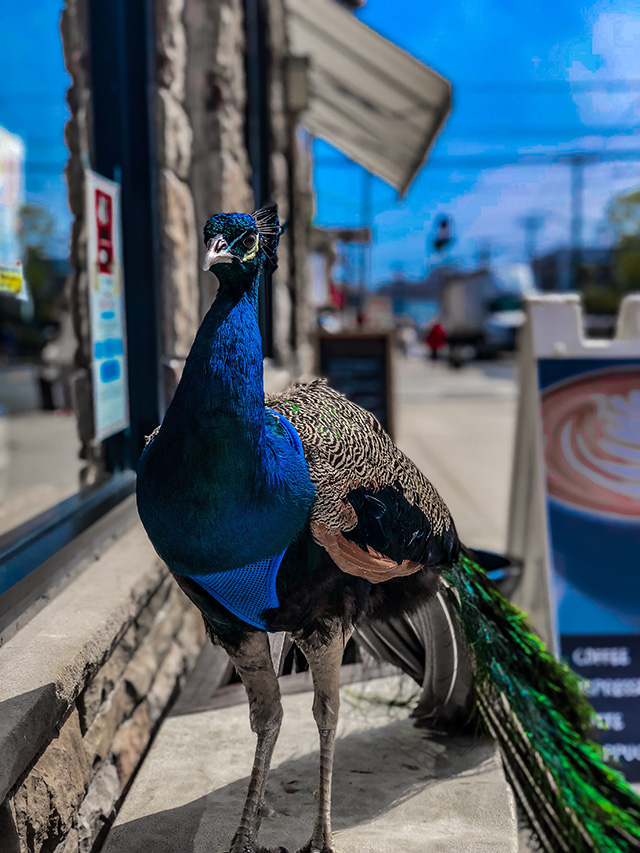
Photo courtesy of Rockaway Rosters employee Hector-Tabora
I contacted Ventiko, eager to hear more about Dexter’s Rockaway adventure. I learned he was just down for the day but Ventiko responded “…We would love to! …we will be back soon to create magic with @anyaferring. Perhaps we can coordinate a get together?” Next time Dexter hitches a ride to Rockaway Beach, we’re going to meet, for an official interview. Stay tuned!











